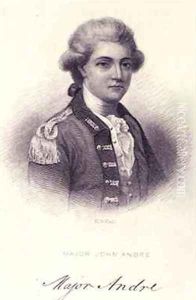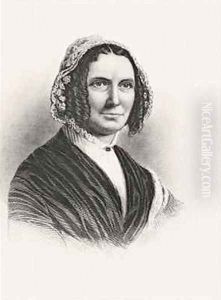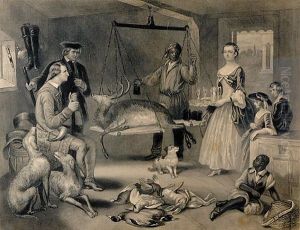Henry Bryan I Hall Paintings
Henry Bryan Hall, born in 1808, was a British-American engraver known for his portraits and historical subject engravings. His life spanned an era of significant change and development in the art of engraving, and he was a part of the transatlantic movement of artists and ideas.
Hall received his early training in England, where he was born, and he established himself initially in London. His artistic career began in earnest in the 1830s, a period when engraving was a primary mode of reproducing images for books, magazines, and separate prints. Engravers like Hall were crucial in the dissemination of visual culture, and their works were the means by which many people accessed fine art and portraiture.
In 1850, Hall emigrated to the United States, settling in New York City, which was rapidly becoming a hub for artists and engravers. His move coincided with a burgeoning demand for engraved illustrations, brought about by advances in printing technology and the rise of a middle-class audience eager for art. In America, he established himself as a skilled engraver of portraits, particularly those of significant public figures. He produced a series of portraits of the United States presidents and other notable individuals of the time, which contributed to his reputation.
Hall's style was characterized by fine detail and an ability to capture the likeness and character of his subjects. His engravings often involved elaborate compositions with attention to texture and light, reflecting the high level of craftsmanship expected in the medium. He worked on both steel and copper plates, although steel became the preferred material by mid-century because of its durability, which allowed for larger print runs.
The latter part of Henry Bryan Hall's career was marked by the continued production of high-quality engravings. However, the art form itself was beginning to be overshadowed by new technologies such as photography and photomechanical reproduction. Despite this, Hall maintained his status as an esteemed engraver until his death in 1884. His legacy is preserved in the collections of historical societies, museums, and libraries, where his engravings continue to be appreciated for their historical value and craftsmanship.


